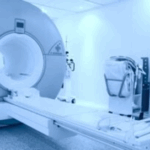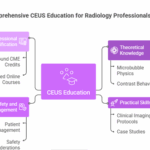Breast cancer doesn’t discriminate, but its impact can be disproportionately felt in certain populations. Asian women, in particular, face unique challenges when it comes to early detection, primarily due to the higher prevalence of dense breast tissue. Traditional mammography, while effective, has limitations in detecting breast cancer early in this demographic. However, advances in medical imaging technology, particularly Breast MRI, offer a promising solution to address these gaps and improve early detection rates.
Understanding the Dense Breast Dilemma of Conventional Mammography
Mammography has long been the gold standard for breast cancer screening, but it is not without its limitations. For many Asian women, mammography may not always be the most effective screening tool due to factors such as breast density and differences in tumor characteristics.
Breast density refers to the proportion of fibrous and glandular tissue in the breast compared to fatty tissue. On a mammogram, dense breast tissue appears white, similar to how cancer does. This similarity in appearance makes it challenging to differentiate between the two, resulting in potential issues such as missed cancers or false positives. These inaccuracies can necessitate additional testing, which may cause unnecessary anxiety for patients.
The MRI Advantage
MRI offers several benefits over traditional mammography, particularly for Asian women:
- Enhanced Sensitivity: MRI is known for its superior sensitivity in detecting early-stage tumors. It provides a more comprehensive view of the breast tissue, allowing for the identification of smaller and potentially cancerous growths that may not be visible on a mammogram.
- Improved Accuracy: With its ability to differentiate between various types of tissues, MRI can reduce the incidence of false positives and negatives. This improved accuracy means that MRI can help ensure that abnormalities are correctly identified, leading to more accurate diagnoses and treatment plans.
- Superior for Dense Breasts: For women with dense breast tissue, MRI is often the preferred imaging modality. It can penetrate dense tissue and provide a clearer image, making it easier to detect tumors that might be obscured on a mammogram.
- Advanced Imaging Capabilities: MRI can provide additional information about the extent of cancer, including whether it has spread beyond the breast. This information is vital for developing a comprehensive treatment plan and improving patient outcomes.
The Role of Radiology Technologists
Radiology technologists and medical imaging professionals play an essential role in the early detection and diagnosis of breast cancer. They are often the first point of contact for women undergoing screening or diagnostic imaging.
- Cultural Competency: It’s essential for technologists to prioritize cultural awareness and sensitivity when addressing the distinct needs of Asian women. This includes understanding their cultural beliefs and practices, addressing language barriers, and providing a comfortable and supportive environment.
- Continuing Education: Technologists should stay up-to-date on the latest advancements in breast imaging, including the use of MRI for high-risk patients. Continuing education courses that offer MRI CE credits can be particularly beneficial in enhancing their skills and knowledge.
- Patient Advocacy: Technologists can act as patient advocates, ensuring that Asian women receive the appropriate screening and diagnostic tests based on their individual risk factors.
Conclusion
Breast MRI represents a critical advancement in the fight against breast cancer, offering a powerful tool to bridge the gaps left by conventional mammography, particularly for Asian women. By enhancing early detection capabilities and improving diagnostic accuracy, MRI has the potential to make a significant impact on breast cancer outcomes. For radiology technologists and medical imaging professionals, obtaining MRI CE credits is essential to stay updated with these advancements and continue providing the best care possible. Embracing MRI technology in screening protocols is a crucial step toward overcoming barriers and improving health outcomes for all women.




